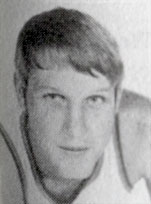

At 7 days post-injury, CHI-1, but not CHI-2 mice, acquired but had no long-term retention of an active place avoidance task. The CHI-1 group significantly regained righting reflex more rapidly than the CHI-2 group. CHI-1 mice spontaneously reinitiated breathing after injury while CHI-2 mice had prolonged apnea and regained breathing only after cardiopulmonary resuscitation and supplementation of 100% O 2.

We report that a single closed head impact to adult C57/BL6 mice produced two injury syndromes (CHI-1 and CHI-2). While this confirms the previously prevailing view, none of the lingering uncertainties associated with the methods used now remains.Blunt impact produces a heterogeneous brain injury in people and in animal models of traumatic brain injury. These experiments demonstrate, with new, more sensitive methods than previously used, that neither is the fusimotor system involved in reinforcement nor are direct excitatory or presynaptic disinhibitory effects on motoneurones. A remaining possibility is discussed: that the Jendrassik manoeuvre operates by modulation of oligosynaptic pathways that may contribute to the largely monosynaptic reflex response. There was found to be less potentiation of soleus tendon jerk and H-reflexes by the Jendrassik manoeuvre under conditions when spindles in the soleus were likely to have a high resting discharge rate. The Jendrassik manoeuvre did not increase the level of ongoing EMG in the soleus during a weak voluntary contraction, indicating that it does not operate by direct facilitation of motoneurones. The Jendrassik manoeuvre failed to increase facilitation, contrary to what would be expected if it reduced the level of tonic presynaptic inhibition the assumption being that the inhibition acts on both homonymous and synergist afferent terminals. A possible presynaptic disinhibitory mechanism was investigated by testing the effect of a Jendrassik manoeuvre on facilitation of the soleus H-reflex produced by a quadriceps afferent volley. In humans, a close synergist of the triceps surae is the quadriceps.

Interposing a Jendrassik manoeuvre between conditioning and the test reflex should have increased reflex amplitude by restoring spindle sensitivity, but this was not the case. Evidence for fusimotor activation during the Jendrassik manoeuvre was sought by recording the tendon jerk reflex as surface EMG in triceps surae after the muscles had been conditioned to leave their spindles in a slack, insensitive state. We investigated several possibilities in human subjects. Tendon jerk and H-reflexes are both potentiated by the Jendrassik manoeuvre, but the mechanism of potentiation remains uncertain.


 0 kommentar(er)
0 kommentar(er)
